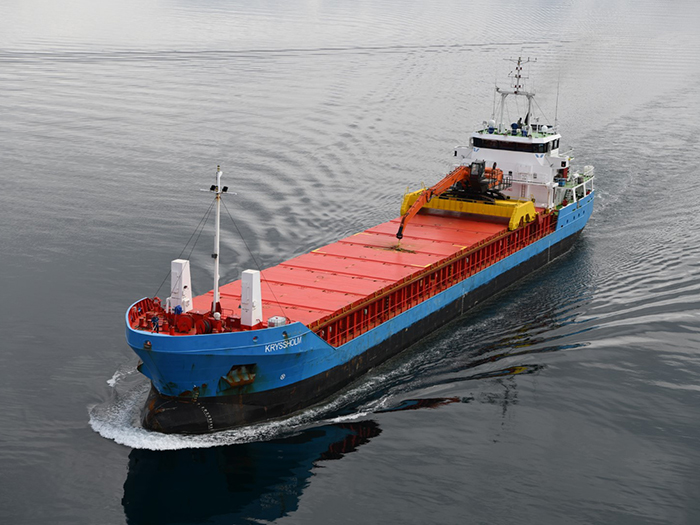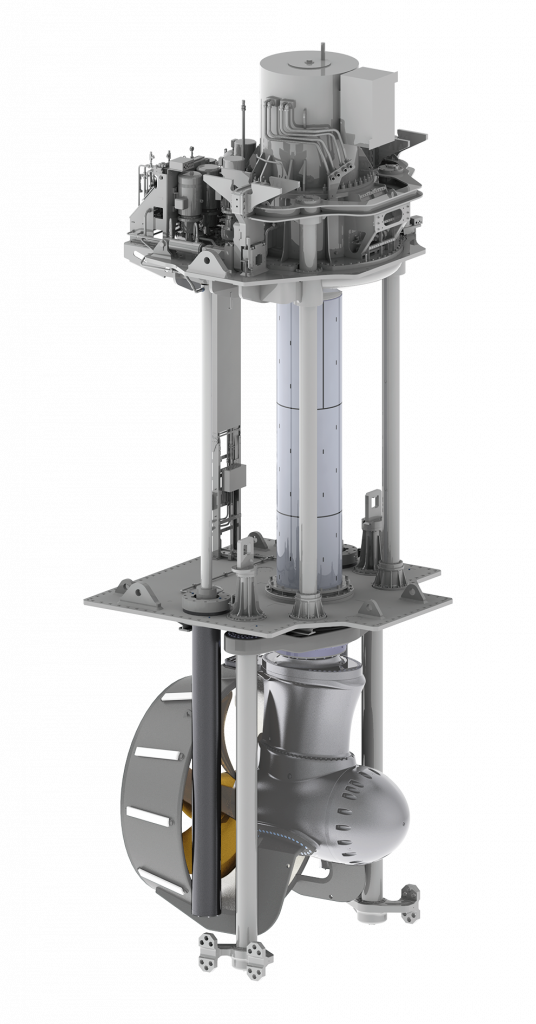
Norwegian bulker will lead a double life after modernization
Written by Nick Blenkey
The Norwegian bulk carrier Kryssholm will soon be able to take on new assignments following a customized upgrade by the Schottel Modernization and Conversion Team [Photo: Per Rydheim]
The Kryssholm, a 2011-built bulker that is currently considered the world’s largest fish feed vessel, will soon be able to take on new assignments following conversion to battery hybrid operation and a customized upgrade by the Schottel Modernization and Conversion Team.
Schottel says that a comparatively small installation effort will yield great advantages, such as increased maneuverability and lower environmental impact.

Two retractable Schottel rudderpropellers type SRP 130 R (300 kW each) and two transverse thrusters type STT 1 (450 kW each) will be installed in addition to the existing main propulsion system of the vessel. This will maximize its maneuverability capabilities and its position stability will be increased enormously. In turn, this will extend the vessel’s operation profiles so that it can be used for a wider variety of future tasks.
To reduce the environmental impact, the Schottel propulsion units will be driven by electric motors powered by a hybrid grid of batteries and generators. By equipping the vessel with a state-of-the-art power management system, the required electric power is provided on demand according to operational needs.
“Schottel, with whom we have a long-standing and consistently good partnership, has again convinced us by finding an individual, custom-fit solution for the vessel,” says Nils Tore Øpstad Melingen, General Manager at vessel owner Bio Feeder AS. “We are absolutely satisfied with the performance of the Schottel thrusters in our other vessel and thus decided the same way again. A decisive factor was also the spare parts and service supply – with Schottel as OEM, this is reliably secured in the long term.”
.
Kryssholm measures an overall length of 89.9 meters and a width of 13.6 meters. With a cargo capacity of 3,000 tons, the vessel will be operating for Biomar as a fish feed vessel six months a year; the rest of the time it will be chartered to Wagle Chartering for transporting general cargo.
The vessel is classified by RINA. Pino Spadafora, Marine Commercial Senior Director at RINA, commented: “Companies that have a deep knowledge of technology must use it for the never-ending improvement of the shipping industry. That’s why it’s important for us to be partners with Bio Feeder and Schottel in this project. RINA will carry out the review of the proposed solutions, the approval of the design, the certification of the components and the commissioning on board, applying the expertise in energy optimization and the competence in environmentally sustainable applications.”
The conversion is scheduled to be completed in the first quarter of 2021.




